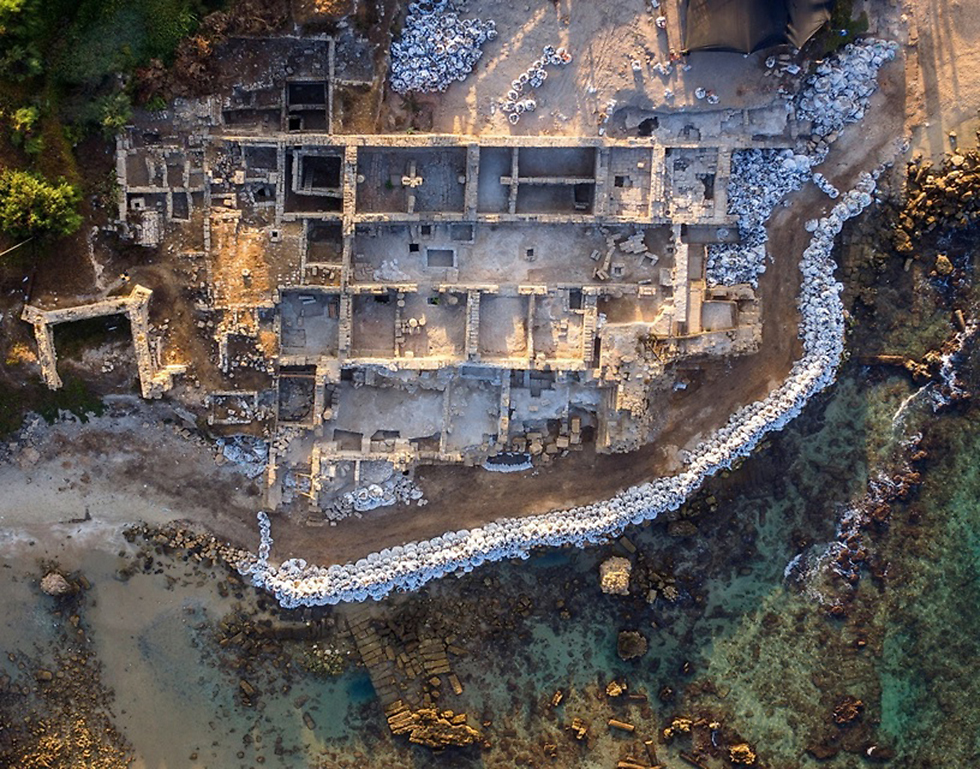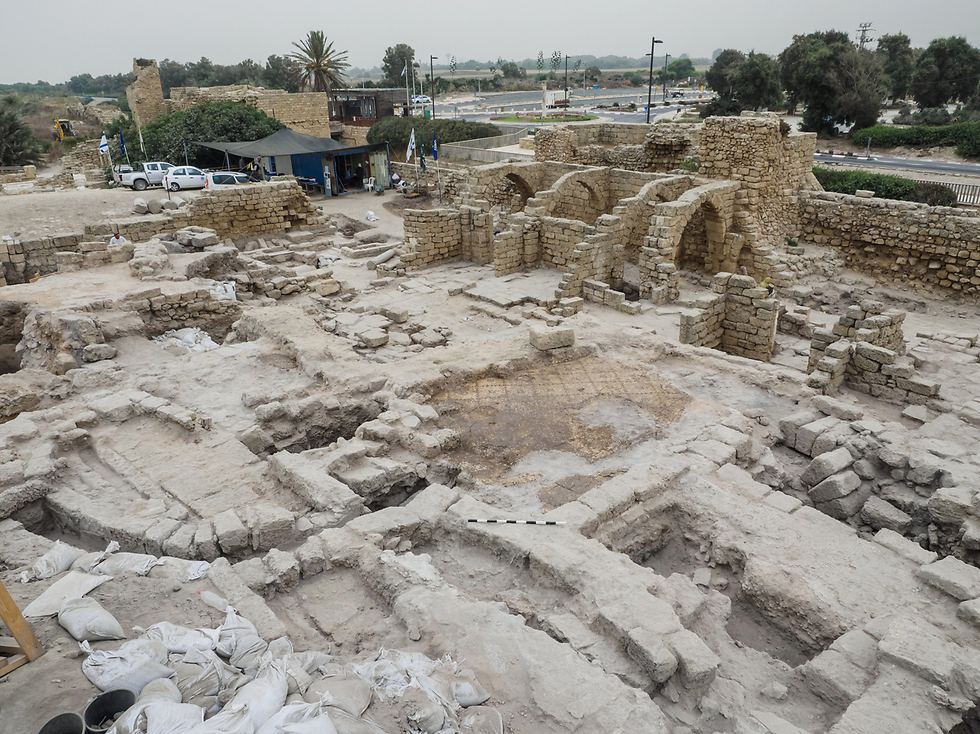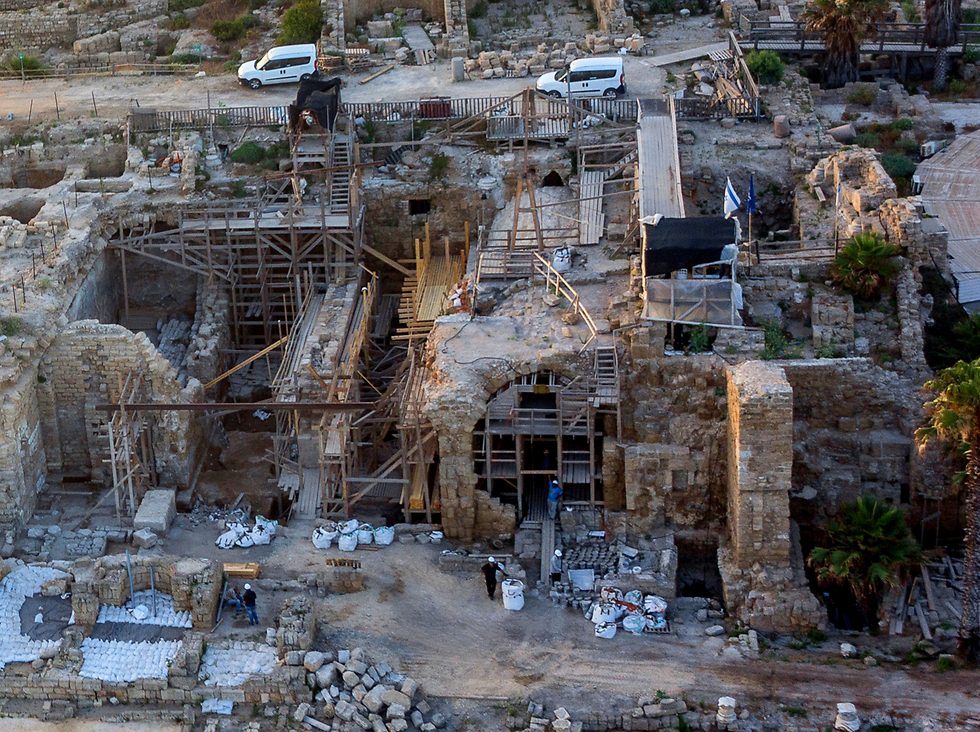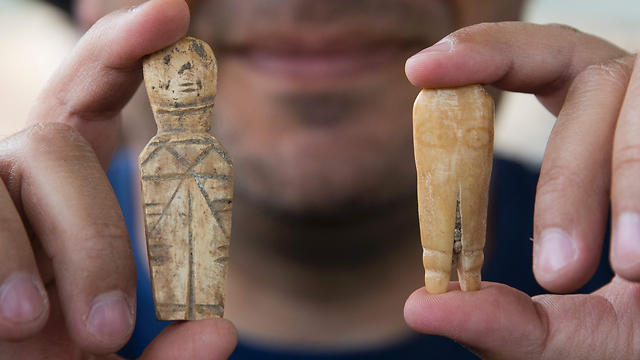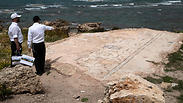
Part of ancient synagogue discovered during renovation.
Photo: AFP
Archaeologists in Israel have begun work to restore a once-towering ancient-Roman temple in the modern-day Mediterranean city of Caesarea.
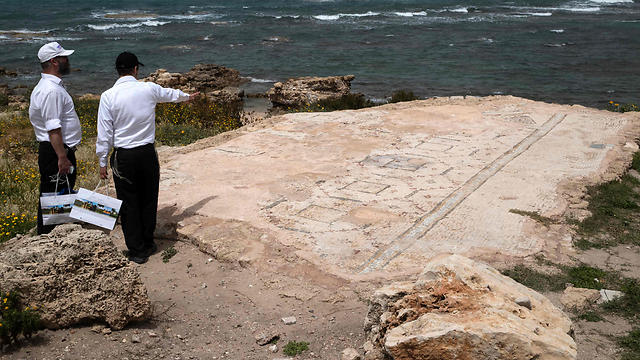 Caesaria was a vibrant Roman metropolis built in honour of Emperor Augustus Caesar by King Herod, who ruled Judea from 37 BC until his death in 4 BC.
Caesaria was a vibrant Roman metropolis built in honour of Emperor Augustus Caesar by King Herod, who ruled Judea from 37 BC until his death in 4 BC.
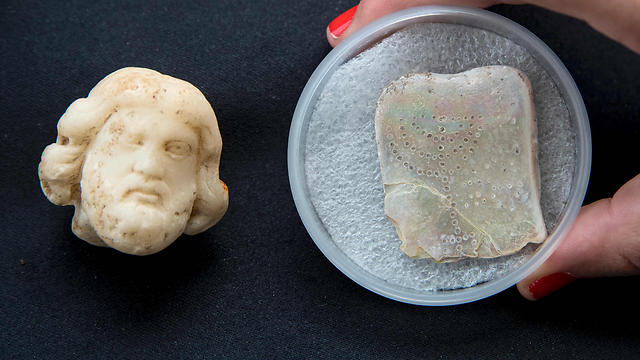
As part of a $27 million project that aims to triple tourist numbers, scores of workers have erected scaffolding, cleared rubble and begun excavations around the more than 2000-year-old ruins.

Part of ancient synagogue, discovered during the renovation of the ancient harbour of Caesarea (Photo: AFP)
Historians tell how the temple loomed above the ancient skyline, perhaps as tall as the Acropolis in Athens, and could be seen from afar by ships voyaging to the holy land.
Caesaria already draws about 1 million tourists each year who can walk among the ruins of aqueducts and the region's oldest surviving Roman theatre.

Head part of a figurine (L) from the Roman period depicting the Asclepius, god of medicine and a small tablet engraved with a seven-branched menorah (Photo: AFP)
The project's backers want to turn the city into a major archaeological site in Israel, second only to Jerusalem. The Israel Antiquities Authority hopes the temple restoration will eventually triple the number of visitors.
The first phase—a system of four vaults, or arches, that will be restored on the temple platform—could be completed by the end of the year.
"The whole experience of the visitor will be completely different. He will be able to sense the atmosphere and actually understand the essence of the building," said Doron Ben-Ami, an archaeologist with the antiquities authority. "This is something that you don't get at any other archaeological site today."
The dig has also unearthed some surprises, like a small mother-of-pearl tablet engraved with a symbol of the Jewish menorah, which is a seven-branched candelabrum.















